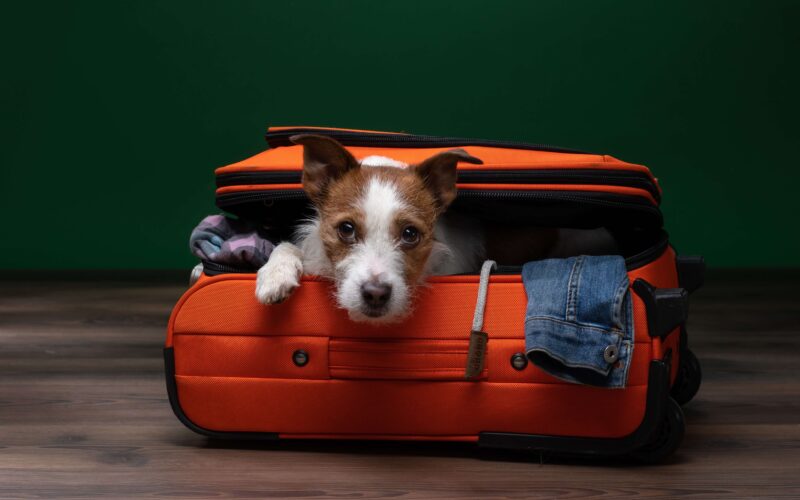Cats on a plane sounds like the name of a sequel to a familiar Hollywood blockbuster released in the early 2000s. However, instead of planning to hijack a plane from the cargo hold, today the feline and canine community is more inclined to the luxuries of first class, together with a tuna-course meal and reclining seats.
Animals on planes is nothing new to the travel industry, as sources dating back to the early 1900s record stories of daring owners carrying animals on their flights, such as Britain’s John Moore-Brabazon who challenged the famous proverb about pigs being unable to fly, by carrying a piglet on a Short Biplane No. 2 during a flight on November 4, 1909. In the 1930s, Australian police authorities got creative by facilitating the rise to fame of Zoe, a white german shepherd police dog, who never actually flew on a plane but sat by herself in a miniature aircraft mockup named after her – the Zoeplane – which was recognized as the usual fan favorite for parades.
Rules about carrying animals on flights have changed over the years. Today, general rules usually state that for an animal to be permitted to board a flight, certain weight, storage, and health standards must be met. Some airlines permit pets as part of hand luggage only if the weight of an animal, together with its container, kennel, or crate is within 10 kilograms. Once the 10-kilogram weight limit is exceeded, the cargo hold is the next permissible location. However, the weight limit for animals stored in the cargo hold must be within 50 kilograms. Healthwise, a veterinary health certificate is mandatory for any traveling animal.
While today they can be quite stringent, it is easy to understand airlines that regularly deal with passengers going to extreme lengths to smuggle their pets onboard flights.
The famous story of Viktor the fat cat, took the media industry by storm in 2019 after his owner Mikhail Galin creatively evaded Aeroflot’s pet regulations. Viktor weighed in at over 10 kilograms which exceeded the airline’s maximum weight limit of 8 kilograms, hence Mikhail devised a clever plan that involved using a cat-double to successfully circumvent the screening process. Mikhail rescheduled his flight for the next day and returned with Phoebe, the double, who weighed in at 7 kilograms. After passing the screening, Phoebe was immediately switched with Viktor and for a moment all of his nine lives were unscathed.
However, the feline-backed deception caught the attention of Aeroflot, after Mikhail decided to publicize his victory lap all over social media. In response, the airline revoked approximately 400,000 passenger miles registered to Mikhail as punishment for his daring deception.
When you intend to travel with a pet it’s recommended to book a direct non-stop flight and avoid holiday or weekend travel. However, the more eccentric canine and feline passengers that desire to travel internationally are required to have a microchip that meets ISO standards.
Pets vs emotional support animals
Rules are usually very straightforward for cats and dogs, but they change when it comes to other animals.
Similar to Viktor’s overweight story, the industry also dealt with a craze of emotional support animals on flights. From 2016 to 2017, the annual number of emotional support animals on commercial flights nearly doubled from 481,000 to 751,000 in the United States. From turkeys and peacocks to kangaroos, a passenger was more likely to sit next to the strangest of emotional support animals than sit near a window seat.
It wasn’t until the US Department of Transportation amended their regulations to recognize only dogs as service animals that the emotional support animal craze ended.
In the wake of the pandemic, in March 2020, feline and canine passenger volumes plummeted to oblivion after facing a wave of COVID-backed red tape and restrictions barring travel. Pets were not accepted by both cargo and passenger airlines, and in rare cases, passengers would have to part with obscene fees just to transport their pets.
A year later, fur-backed passenger volumes are regaining momentum as they look to reclaim their cabin seats and partake in the holiday travel. The Australian Civil Aviation Safety Authority is reportedly planning to relax pet regulations in the second half of 2021. However airlines are still cautious over how much rope they will allow their furry passengers to have.

